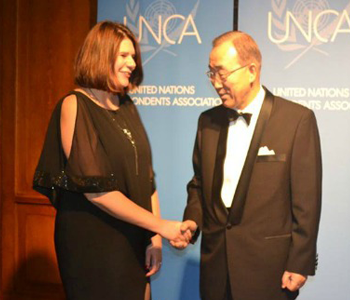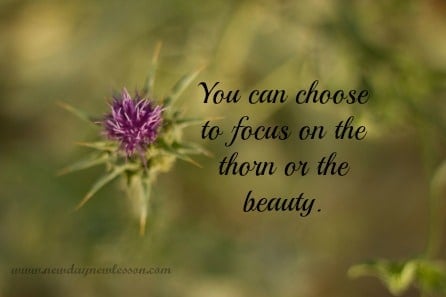
by Mamma Simona (South Africa) | Apr 23, 2014 | 2014, Being Thankful, Life Balance, South Africa

PAIN, a short, seemingly innocuous word with a myriad of meanings.
Right now, for me, pain is central to my existence. No matter what I do, it nags at me like an incessant demanding toddler. It robs me of my concentration, of my memory, of my strength. Yet, if you were to see me, you would have no idea of the war raging inside my body. I smile politely and do what needs to be done, because I still feel blessed.
You’re probably shaking your head and wondering what medication I’m on. Let me explain. Many years ago I had no physical pain but I was clinically depressed. Anyone who has experienced depression will tell you that it’s a numbness that’s so much worse than the strongest pain anyone could experience. When I was at my worst, I was completely unable to function. It took many years of trial and error with different therapies, doctors and medications (including a month in a Psychiatric Clinic) before I truly came out of that quagmire I was stuck in.
My “regular” Fibromyalgia pain reminds me that I’m alive and I can feel things again. I’ve been living with Fibromyalgia for a long time now. For the most part, I can pretty much ignore it because I know it’s not life-threatening. I see it more as an inconvenience, not even worth mentioning. Every once in a while I overdo things and I then I experience bad to really bad pain days. Those are the days when I find it hard to do even the most basic things.
I think human beings are very resilient. We quickly get used to living with chronic pain and/or fatigue and/or any other kind of disability. It becomes the new “normal” and you don’t really remember what it felt like “before”.
So, if I’m used to my Fibromyalgia, what pain am I referring to? I have Trigeminal Neuralgia on top of my Fibromyalgia and it’s no picnic, especially since there isn’t much you can do about it. This is the fourth time in my life that I’ve had a Trigeminal Neuralgia “flare up”. In the past it normally went away after about a week. This time it has come and doesn’t want to leave. It’s been 3 weeks and counting. Surprisingly, I’ve pretty much gotten used to it too.
Believe it or not, what finally broke me down, reduced me to tears and sent me to the ER was lower abdominal pain. A new pain, one that I’d never felt before. It turns out I have an ovarian cyst and enlarged left ovary. Again, in the grand scheme of things, no big deal. It’s not life-threatening. They often clear up on their own. The positive side of going to the ER was that I was given a wonderful injection (sorry, can’t remember what it was) but for 12 hours I felt NO pain of any kind from anything at all. I’d forgotten what no pain felt like. It was like a holiday.
Yes, I’m in a lot of pain right now, but I’m still blessed. I’m blessed because I don’t have a terminal illness and will likely live to meet my grandchildren one day. I’m blessed because I have two awesome children that I am extremely proud of and with whom I have a great relationship. I’m blessed because I have a husband / best friend / partner who has truly stuck by me for richer for poorer (often poorer) in sickness and in health (often sickness) has never complained about it, and loves me despite it all. I’m blessed because none of this has kicked me back down the bottomless black hole of depression … and, because of all this, I am CONTENT.
Of course I’d love to be pain free – or (at least) back to only my “regular” pain, but this is proof positive that contentment doesn’t come from exterior circumstances. More than anything else, this understanding is the reason that I am happy that this has happened to me.
One of my favourite Dr Phil quotes is: “No matter how flat you make a pancake, it has two sides.” Indeed it does, EVERYTHING does. What I have discovered is that there are truly positives and negatives to everyone, everything, and every situation. If you are able to see and accept the duality, you’ll always be content!
Have you ever experienced anything that at first seemed really bad but then something really good came out of it?
Mamma Simona lives in Cape Town with her husband, her daughter, two cats and two dogs. Her son recently moved to Germany.
Photo credit to Susie Newday
Mamma Simona was born in Rome (Italy) but has lived in Cape Town (South Africa) since she was 8 years old. She studied French at school but says she’s forgotten most of it! She speaks Italian, English and Afrikaans. Even though Italian is the first language she learned, she considers English her "home" language as it's the language she's most comfortable in. She is happily married and the proud mother of 2 terrific teenagers! She also shares her home with 2 cats and 2 dogs ... all rescues.
Mamma Simona has worked in such diverse fields as Childcare, Tourism, Library Services, Optometry, Sales and Admin! (With stints of SAHM in-between). She’s really looking forward to the day she can give up her current Admin job and devote herself entirely to blogging and (eventually) being a full-time grandmother!
More Posts - Website
Follow Me:


by Purnima Ramakrishnan | Apr 22, 2014 | 2014, Awareness, Brazil, Environment, Human Rights, Humanitarian, Purnima, Social Good, Water, World Moms Blog

Photo of Celia’s saplings by Purnima Ramakrishnan
“Universal access to water is a right to all and now it is just on our doorsteps” said farmer Celia. I was traveling as a International Reporting Project Fellow, and we had just arrived in the semi-arid city of Cumaru, in the North-Eastern state of Pernambuco.
We had lunch at Joelma’s place who is a farmer in Cumaru. She made delicious rice, palma salad with lots of vegetables in it (a variety of sustainable cacti, native to the lands and which is used to feed both livestock and people). And then we went to her sister-in-law, Celia’s farm. Celia is also a farmer.
When Celia was six years old, she used to go downhill and carry water back up to her home in pots and buckets, and she recalls them being very heavy. When she cajoled her father, he sometimes let her use a donkey to bring it back home. This, the six-year-olds woke up at 3 AM every day to do. I have an 8-year-old at home, and I cannot imagine giving him such a life.
Today though, she is grateful that she can give her own two-year-old, a better life, thanks to the Cisterns project.
The average rainfall in these semi-arid lands varies from 200 to 800 mm, which is very irregular for habitation. Moreover, the amount of evaporation in these lands is three times higher than the rainfall. Hence it becomes even more important to capture the rainwater for families during the dry season. This is the concept of the Cisterns project.
The ASA (Articulation Brazilian Semi-Arid) is a network of social organisations operating in the Northeast of Brazil which aims to “empower civil society to build participatory processes for sustainable development and cope with the semi-arid land based on cultural values, and social justice.”
ASA was born from accumulated experience of organisations and social movements that have worked for years in the perspective of living with the Semi-arid climate. In 1999, the ASA presented a joint project for the Semi-arid to the society and the government, and thus the Articulation became a network.
In 2003, ASA launched P1MC (Program One Million Rural Cisterns), which aims to build 1 million water reservoirs to meet the needs of 5 million families. Currently there are 500 thousand reservoirs and the program has graduated into a public policy adopted by the Federal Budget.
These water reservoirs or cisterns are of two types. Every family has cisterns with a capacity of 16,000 litres of water for domestic use and another of 52,000 litres of water for farming and livestock use. The technology employed here is called social-technology and basically collects water from the rooftops and harvests the rainwater. The families are given a course in water management and are also requested to take a course in farming in semi-arid.
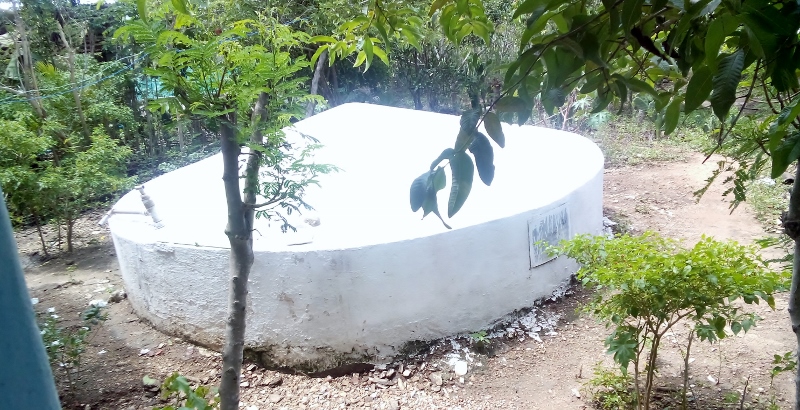
Photo of a 16000 litre cistern by Purnima Ramakrishnan
Celia says, she is now employed and this has brought about female empowerment along with water, and agriculture, all because of the cistern on her doorstep.
She cultivates small saplings and sells it to the other farmers. She grows corn, papaya, oranges, tangerine, beans, cashew, Umbu, tamarind, and many other things. She also sells the produce (though now too much) in the market and to other farmers. Her husband works in construction department in the town, whereas she lives in the village doing her farming with her two-year-old. She hopes to give a better life to her son.
She has been taught in her course to cultivate three types of plants, she says. The first is the native plants which thrives well on the soil of the area with not much dependency, and is more suited to the semi-arid climate like the Umbu. Then the plants which are not suited to the area, like corn, for which abundant water is available from the cisterns. And the third type is the plants for the livestock like Palma. This ensures that the plants give back to nature what they take from it. The soil gets enriched and also nurtures the plants. It is a two-way process.
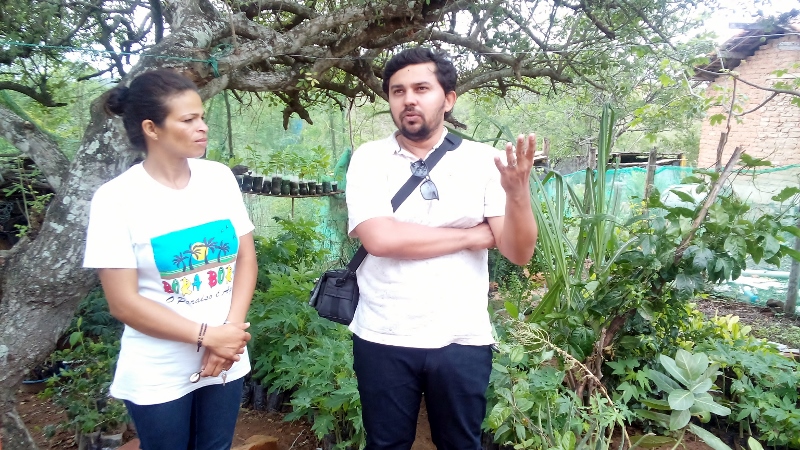
Carlos-explaining-about-the-cisterns-and-farmer-Celia-looking-on Photo by Purnima Ramakrishnan
This seed of change stimulated by social organisations that operate in the region have prompted the development of coexistence of half-barren lands with practical goals absorbed by the government to promote sustainable living.
We asked Carlos, the program coordinator of ASA in the region, “Is this a solution for food security?” He said it is much more than that. It is a solution for independence, female empowerment because of employment in one’s own farm, it is a way to make the semi-arid a much greener place to live, it is a solution to democratize water, and make it a universal right, not a consumer product.
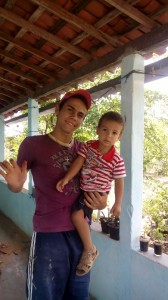
Celia’s son and nephew, Photo by Purnima Ramakrishnan
I remember that water was more expensive than beer in my hotel. And I now knew why! One should not pay to have to drink water, he said.
This concept can be embraced in many developing semi-arid regions.
On this Earth Day, let us pledge to make our cities greener and conserve water. Let us spread such buds of change through social media, and other channels.
How do you plan to honor this Earth Day?
This is a post written by Purnima Ramakrishnan on her #BrazilMDGs trip to Brazil as a fellow of Journalism with the International Reporting Project.

by Olga Mecking | Apr 21, 2014 | 2014, Awareness, Being Thankful, Bilingual, Communication, Family, Health, Humanity, Humor, Kids, Language, Life Balance, Maternal Health, Motherhood, Netherlands, Parenting, Siblings, World Motherhood, Younger Children
 One of my very favourite human qualities is a sense of humour. I must confess that I sometimes find people lacking this wonderful quality, as boring. It isn’t nice of course but I believe a sense of humour is paramount to any human’s well being or even survival. Especially if you’re a mom.
One of my very favourite human qualities is a sense of humour. I must confess that I sometimes find people lacking this wonderful quality, as boring. It isn’t nice of course but I believe a sense of humour is paramount to any human’s well being or even survival. Especially if you’re a mom.
I love all kinds of humour: simple, sophisticated, absurd, or even black humour. By the latter, I mean of course, serious matters that are funny.
When my days are filled with screams and cries and tantrums, the only thing that keeps me afloat is laughing about it. And when I share my pearls of wisdom on Facebook, not only does it make me feel better, it makes others feel better, too. I also love reading snarky, funny, honest posts that make me nod my head in agreement. When times are hard, humour helps me survive.
We all know that parenting is tough and humour can help with that as well. I, for one, rely heavily on it. When my daughter refuses to put on her jacket, I ask her to put on her pj’s. Then her bathing suit. Then her bathrobe. She laughs, says no to all I suggest and puts on her jacket without any problems. That is, obviously provided that I actually remember to laugh instead of to yell.
I often try to persuade my big girl that I have 10 legs. She kindly and patiently explains that no I really can’t have 10 legs. “Why?” I ask her. She tries to explain that humans only have 2 legs but to no avail. I really need to know why I only have 2 legs, not 10. I mean, 2 legs, how lame is that! At some point, she cracks up and so do I and we both laugh until we can’t laugh anymore.
So you see, it is not very surprising that I want my children to have a sense of humour and a big one at that. Puns, laughter and jokes are normal in our house. And already, I begin seeing it in my children. For instance, I loved a recent conversation with my three-year old.
“Mama?”- she asks me, with a glint in her eye, and a smile playing in the corner of her mouth.
“Yes, J?”- I answer, wondering what she’s going to say.
“Mama?”- she repeats, her tone still serious but the smile more visible.
“Yes, J?”- I repeat, not sure what to think of it.
“Pee-Pah-Paw!” she says, out of nowhere, her laughter filling the house. “Pee-pah-paw”- I say, and soon the whole family joins her till our bellies hurt.
My baby has a mischievous smile that makes my heart melt. When he laughs, I think I’m the luckiest mom on Earth. I ‘m sure that he too will grow up to have a sense of humour, just like his sisters.
I especially love when they make multilingual jokes, like “Ja-vocado” and “Nie-vocado” (“ja” is “yes” in German while “nie” means “no” in Polish). When asked what a ja-vocado is, my eldest daughter said that it’s a fruit that is yellow on the outside and pink on the inside and it is sweet and very delicious and that she likes it a lot.Funny that she can imagine liking fruit that doesn’t even exist.
I am always surprised how many functions humour can have: it can help you through tough times. It can turn a rejection into cooperation, in children and adults alike. It makes children clever and great with languages. It makes us see things in a different way.This is why I feel it is so important.
I’m not funny all the time, though and that’s fine. It’s OK to be sad sometimes. I won’t pretend that my day is better than it is. But when I remember, I find in myself the strength to stick my tongue out at the universe and say: “Pee-Pah-Paw”. And laugh until my belly hurts.
Are you raising your kids to have a sense of humour or appreciate humour?
This is an original post to World Moms Blog from our writer in the Netherlands, Olga Mecking.
The image used in this post is credited to cherijoyful. It holds a Flickr Creative Commons attribution license.
Olga is a Polish woman living in the Netherlands with her German husband. She is a multilingual expat mom to three trilingual children (even though, theoretically, only one is trilingual since she's old enough to speak). She loves being an expat, exploring new cultures, learning languages, cooking and raising her children. Occasionally, Olga gives trainings in intercultural communication and works as a translator. Otherwise, you can find her sharing her experiences on her blog, The European Mama. Also take a while to visit her Facebook page .
More Posts - Website
Follow Me:




by Salma (Canada) | Apr 18, 2014 | 2014, Death and Dying, Kids, Life Lesson, Loss of Child, Motherhood, Religion, Salma, World Motherhood, Younger Children
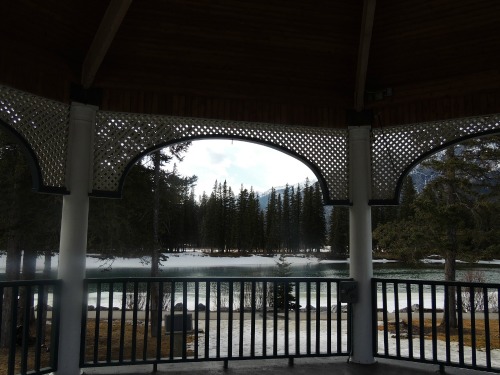 We read about it as young children in folklore and fairy-tales. If we grew up in religious homes, we were taught about various aspects of it, without a full understanding of what it all meant. While I have a different outlook at this stage in my life, I try to shield my children from the pain of it. We can all agree that death (or the idea of dying) is scary.
We read about it as young children in folklore and fairy-tales. If we grew up in religious homes, we were taught about various aspects of it, without a full understanding of what it all meant. While I have a different outlook at this stage in my life, I try to shield my children from the pain of it. We can all agree that death (or the idea of dying) is scary.
In January 2010 I became a Peer Infant Loss Support Worker; two months later I was pregnant with my first Rainbow baby. Last year I applied to volunteer at a palliative care facility. Having dealt with loss, being younger than most of the volunteers, and since I was going through the process of grieving my infant son who passed away in 2009, the coordinator was sure that I was just what the program needed. Interestingly, I became pregnant soon after. Call me superstitious, however, at this point, I came to one conclusion – I’d had enough with death – I needed a break. I quickly resigned.
While my resignation was totally unreasonable and my actions irrational, I never looked back until I gave birth to a healthy baby girl. After the death of my father in 1993 I began thinking about death; but it wasn’t until the death of my infant son that I began searching, speaking and learning about the practices, rituals and beliefs surrounding life and death. For instance, before my son’s death, I knew nothing about Islamic burial practices. My husband, who had been to a couple of funerals also had no idea what to do. Our lack of knowledge, coupled with grief made it extremely difficult to process the practice of what was being done and why.
It was not until after the death and burial, that I truly began to understand the Islamic view on death and dying. Muslims believe that human existence continues after death in the after-life, and that we are judged on our actions from this life. We are taught to prepare for the after-life by doing good deeds in this life. Upon death, the corpse is washed by family members, shrouded in a white cloth, buried on its right side, with the head facing Mecca.
After our experience I began to ask questions about death and dying. While I am by no means an authority on these practices, I have connected with many women who have shared their experiences. In our dialogue, I have learned about Tibetan Buddhist rites of passage and the Tibetan Book of the Dead, various Christian ideas like Catholicism’s idea of purgatory and resurrection. I also learned about practices, like Balinese Hinduism death towers and the Jewish ritual of Shiva.
Death is frightening. Words like eternal life and afterlife can be comforting and scary simultaneously, especially for those of us who connect these words with thoughts of retribution and judgement. A few years ago, a Social Worker noted: “…parents aren’t supposed to bury their children.” I’ve heard this before, but I don’t really believe or subscribe to this thought. I learned that life is a journey, and we are all here for different reasons. Sometimes our road takes us farther than others.
So has my experience with burying a loved one made it easier for me to swallow the concept of my mortality? Has my cross-cultural knowledge made it easier to speak about it? Not really. Without a doubt, death is central to our existence. I am not blind to the reality of it, especially when it seems imminent (watching a friend or family living with serious diseases), but I don’t want to deal with it unless I have to.
What practices/beliefs about death and after-life do you hold?
This is an original post written for World Moms Blog by Salma. You can find Salma blogging at Party of Five in Calgary.
Photo credit to the author.

An Imperfect Stepford Wife is what Salma describes herself as because she simply cannot get it right. She loves decorating, travelling, parenting,learning, writing, reading and cooking, She also delights in all things mischievous, simply because it drives her hubby crazy.
Salma has 2 daughters and a baby boy. The death of her first son in 2009 was very difficult, however, after the birth of her Rainbow baby in 2010 (one day after her birthday) she has made a commitment to laugh more and channel the innocence of youth through her children. She has blogged about her loss, her pregnancy with Rainbow, and Islamic life.
After relocating to Alberta with her husband in 2011 she has found new challenges and rewards- like buying their first house, and finding a rewarding career.
Her roots are tied to Jamaica, while her hubby is from Yemen. Their routes, however, have led them to Egypt and Canada, which is most interesting because their lives are filled with cultural and language barriers. Even though she earned a degree in Criminology, Salma's true passion is Social Work. She truly appreciates the beauty of the human race. She writes critical essays on topics such as feminism and the law, cultural relativity and the role of women in Islam and "the veil".
Salma works full-time, however, she believes that unless the imagination of a child is nourished, it will go to waste. She follows the philosophy of un-schooling and always finds time to teach and explore with her children. From this stance, she pushes her children to be passionate about every aspect of life, and to strive to be life-long learners and teachers. You can read about her at Chasing Rainbow.
More Posts - Website
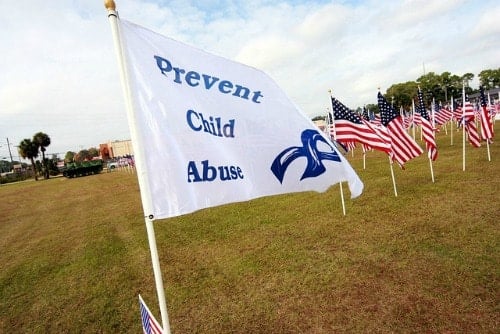
by Nihad | Apr 16, 2014 | 2014, Childhood, Egypt, Human Rights, Kids, Teenagers, The Advocates of Human Rights, Tragedy
 Zeina was a 5-year-old girl living with her family in Port Said, a city on the Suez Canal in Egypt. She was the youngest of three children.
Zeina was a 5-year-old girl living with her family in Port Said, a city on the Suez Canal in Egypt. She was the youngest of three children.
One fateful day, Zeina was playing in front of the door of her apartment. The porter was going to the roof of the building and by chance, the lift stopped at the floor where Zeina was playing. He found her playing alone with no one watching her, so he took the girl with him to the roof. On the roof was another guy, a friend of the porter, waiting for him. There was something on their minds that Zeina didn’t and couldn’t possibly know.
Their intention was to violate the innocence of that beautiful and chubby child. They wanted to rape her, but they couldn’t as she started to scream. They then quickly realized that her mother had found out that she was missing and all the buildings’ inhabitants had started looking for her in the street. To hide what they had done, the two guys decided to get rid of Zeina, so they threw her from the seventh floor to the back of the building.
The cold-hearted criminals then came downstairs pretending not to know anything about her and went to look for Zeina with the family. The family eventually found the little girl bleeding in the back area of the building and took her to the hospital but she died. The police investigated, found Zeina’s killers and arrested them. They were accused of killing her.
The family—as did everyone following Zeina’s story—expected the criminals to be condemned to death but instead they were condemned to only 15 years in jail. It was shocking for all of us but the problem is that the two accused guys were a few months under age 18 and there is a law that prevents condemning any young man below 18 to death no matter what his crime is.
The criminals were laughing, smiling and showing the victory sign inside their cell, while Zeina’s poor mother was screaming and crying very hard. The judge apologized to Zeina’s family as he could do nothing about it, it’s the law. Even the father of one of the killers said “My son deserves to be condemned to death 5 times for his crime”.
The story of Zeina summarizes the story of hundreds, thousands or maybe millions of children who are sexually abused every day all over the world.
And sadly, Zeina’s story is not the only one. A few months later another little girl named Hoda was raped mercilessly, choked to death and beaten with a stone to her head. Hoda was just 4.5 years-old playing in front of her house in her village in Meniah, a city in Upper Egypt. Hoda was raped and killed by her neighbor. Her dead body was found totally naked and bleeding in a house under construction.
A few days before Hoda was raped and killed, Eman a 13 years old girl was killed as well. The criminal choked her to death after failing to rape her and to be sure she died he stabbed her with a knife several times and then threw her body in the canal. Her family found her the following day, floating on the surface of the water. The guy accused of her murder is her father’s cousin, a member of the family. Hoda and Eman’s murderers may be condemned to death as they are over 18 years old.
Every few weeks we wake up with another story of a new Zeina in the newspapers, a young child or a teenage girl who is raped and killed mercilessly by a teenager or an adult. Not only has the child been put through horrors no one should know, but the whole family continues to suffer the pain of loss and the guilt of not being able to protect their child.
Zeina’s mother on TV, apologized to her young daughter for not being there to protect her and save her when she was screaming and calling for help. I couldn’t control my tears when I watched that. Sometimes there is also shame on the family’s part that their daughter has been raped. This is especially true in rural areas. Eman’s family was relieved when they realized that the criminal failed to rape her. It was obvious in their words when they announced that on the TV with great pride and honor.
Sexual abuse against children is something that any family could fall victim to because we seem unable to protect children from it`. There seems to be no end in sight for the heartbreak that families have to cope with when their innocent child is violated or hurt.
ًFor me, what is shocking about these crimes is that when the criminal is under 18 years old he is considered a child and the Egyptian child law (according to The Convention on the Rights of the Child, CRC) can’t condemn any of them to more than 15 years in jail no matter what their crime is.
This law protects the criminal child but what about the victim child? Aren’t we aggrieving them? Don’t they and their families deserve more justice and more sympathy? How can a law protect the rights of the criminal and ignore the rights of the victim?
Have there been any similar crimes in your country? What were your feelings about how the victim’s family viewed the situation?
This is an original post for World Moms Blog by Nihad from Alexandria, Egypt. Nihad blogs at Aurora Beams Life Coaching.
Photo credit: Bruce Tuten

Nihad is an Egyptian woman, who was born and has lived her whole life in Alexandria, Egypt. She says, “People who visited this city know how charming and beautiful this city is. Although I love every city in Egypt, Alexandria is the one I love the most.”
She is a software engineer and has worked in the field for more than twenty years. But recently she quit her job, got a coaching certificate and she is now a self employed life and career coach. She says, “I believe that women in this era face big challenges and they are taking huge responsibilities. That's why I have chosen my niche -- women looking for happiness and satisfaction. I help and support them in making whatever change (career change, life change, behavior change, belief change…) they want to bring more satisfaction and happiness in their lives.”
Nihad is a mother of two lovely boys, 15 and 9 years old. She states, “They are the most precious gifts I have ever had. I madly love them, and I consider them the main source of happiness in my life.”
Our inspiring mother in Egypt can also be found at Aurora Beams Life Coaching.
More Posts
















 We read about it as young children in folklore and fairy-tales. If we grew up in religious homes, we were taught about various aspects of it, without a full understanding of what it all meant. While I have a different outlook at this stage in my life, I try to shield my children from the pain of it. We can all agree that death (or the idea of dying) is scary.
We read about it as young children in folklore and fairy-tales. If we grew up in religious homes, we were taught about various aspects of it, without a full understanding of what it all meant. While I have a different outlook at this stage in my life, I try to shield my children from the pain of it. We can all agree that death (or the idea of dying) is scary.

